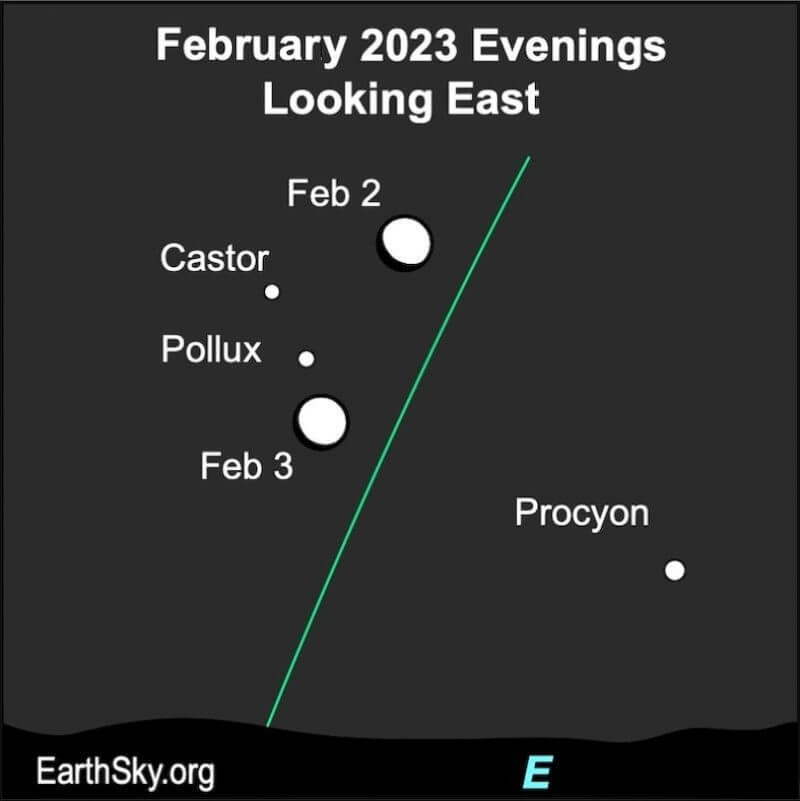Originally published by EarthSky.

On the evenings of February 2 and 3, the bright waxing gibbous moon climbs in the east, near the twin stars of Gemini. The brighter star is golden Pollux, and the fainter one is white Castor. Although the twin stars don’t look alike, they’re noticeable near each other in the sky for being bright and close together. Also nearby is Procyon, the brightest star in Canis Minor the Lesser Dog. Read more about the moon near Castor and Pollux. Chart via John Jardine Goss/ Theresa Wiegert/ EarthSky.
Moon near Castor and Pollux
Look east in the early evening on February 2 and 3, 2023. You’ll find the waxing gibbous moon near the bright stars of Gemini the Twins, Castor and Pollux. The waxing gibbous moon doesn’t set until almost sunrise the following morning, so you can see the moon near the “twin” stars most of the night.
Although the twin stars don’t look alike, they are quite noticeable near each other in the sky, because they’re bright and close together. Castor is the slightly dimmer star of the pair, and Pollux is more golden in color. Also nearby is Procyon, the brightest star in Canis Minor the Lesser Dog. With the nickname of the Little Dog Star, it rises before the Dog Star, Sirius.
Castor and Pollux are each interesting stars on their own. Despite being labeled as twins, Castor and Pollux are not gravitationally bound. Yet Castor is gravitationally bound into a multiple system of its own. It’s six stars in one!
Castor is about 51 light-years away. Pollux is only 34 light-years away. So Pollux is closer to us. And their distances also show Pollux and Castor aren’t gravitationally bound, but only appear near each other along our line of sight.
Pollux pumps out a good bit of energy in non-visible infrared radiation. With all forms of radiation counted, Pollux is about 43 times more energetic than our sun. And that infrared radiation is showering down upon a planet. In 2006, astronomers confirmed that Pollux has a planet at least 2 times the mass of Jupiter. The International Astronomical Union announced a proper name for this planet in 2015: Thestias.
Bottom line: You can spot the waxing gibbous moon near Castor and Pollux in Gemini the Twins on the evenings of February 2 and 3, 2023.


